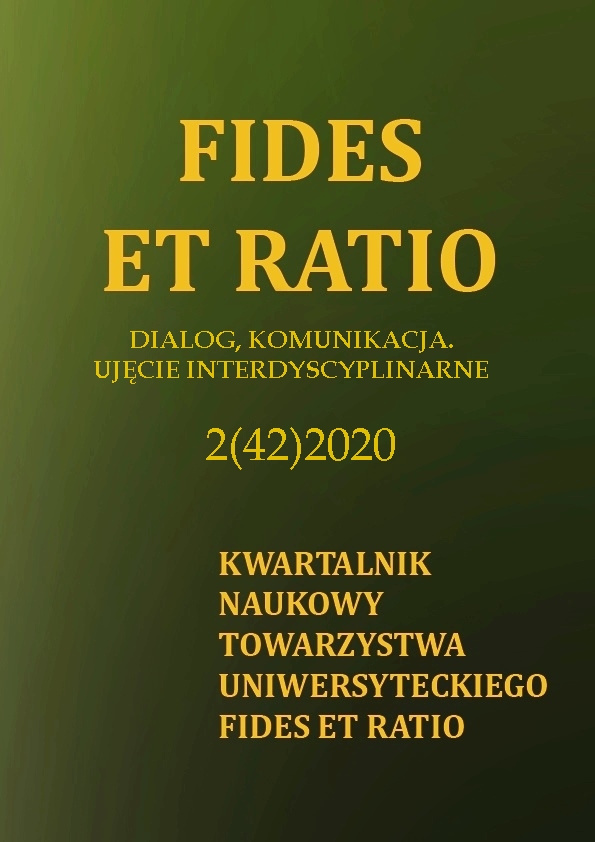Abstract
Education in ethical behavior is part of the development of preschool children. The child learns ethical behavior from significant people in his life (parents, teachers). During this period, you need to understand the surrounding values and social interactions through play. She passes from a characteristic of early childhood self-centeredness at the stage where she juxtaposes her needs with the needs of others in the context of accepted social behavior. Ethical attitudes of children are shaped as a result of educational departments. One of them is the method of the Veronica Sherborne Developmental Movement (Sherborne Developmental Movement, abbreviated SDM), which plays the psychomotor development of children. In education, SDM offers the ability to understand and recognize the emotions and mental relationships of other people, cooperating with developing empathy and moral feelings, as well as learning to communicate their needs and understand the communication of other people. The value of the Developing Movement is that it is helpful in developing communication, which means that games take on new meanings for children. V. Sherborne's relational games ('with', 'against' and 'together') are an invaluable source of education for moral behavior. The set of tools for the theory of moral development of J. Piaget with the Developmental Movement Method is noticeable that SDM is a tool that can be used in any of the conditions to take into account moral development during verbal and non-verbal joining. Developing Movement, benefiting from location response and verbal feedback, read body language and respond to it, and evaluate communication in ethical situations difficult for children.
References
Dziubiński Z. (2017). Osobowość w kontekście kultury fizycznej, (w:) Z. Dziubiński, K.W. Jankowski (red.), Kultura fizyczna a osobowość, s. 27-54, Warszawa: Salezjańska Organizacja Sportowa Rzeczypospolitej Polskiej.
Grabowski H. (1999). Teoria fizycznej edukacji, Warszawa.
Hill C. (2013). Komunikacja poprzez ruch. Ruch Rozwijający Sherborne dążenie do poszerzania perspektyw, Warszawa: Centrum Szkoleniowo- Wydawnicze Arteer Elżbieta Rybicka.
Huizinga J. (1985). Homo ludens: zabawa jako zródło kultury, Warszawa: wyd. 2. Czytelnik.
Kataryńczuk – Mania L., Magda – Adamowicz M., Olczak A. (2017). Pedagogika przedszkolna szansą na świadome budowanie potencjału dziecka, Toruń: wyd. Adam Marszałek.
Kuk A., Gala – Kwiatkowska A. (2017). Typy miłości i style rozwiązywania konfliktów studentów i studentek uczestniczących w warsztatach psychologicznych, Kwartalnik Naukowy Fides et Ratio, T. 4, nr 32, s. 197-207.
Ma, H. K. (2013). The moral development of the child: an integrated model. Frontiers in public health, 1, 57. doi:10.3389/fpubh.2013.00057
Loland S. (2002). Fair play in sport. A moral norm system. London-New York.
Maszczak T. (2009). Edukacja fizyczna w nowej szkole, Warszawa: AWF.
Nowacka - Dobosz S., Pokorska M., Gala- Kwiatkowska A., Wójcik K. (2019). Budowanie poczucia bezpieczeństwa fizycznego i emocjonalnego w okresie wczesnej adolescencji, Kwartalnik Naukowy Fides et Ratio, T. 1, nr 37, s. 6-18.
Obuchowska I. (2007). Adolescencja. (w): B. Harwas-Napierała, J. Trempała (red) Psychologia rozwoju człowieka. Charakterystyka okresów życia człowieka (t. 2, s.163-201), Warszawa: Wydawnictwo Naukowe PWN.
Patanella D. (2011). Piaget’s Theory of Moral Development. (In): S. Goldstein, J.A. Naglieri (eds) Encyclopedia of Child Behavior and Development, Springer, Boston, MA.
Piaget J. (1932). The moral judgment of the child, London: Kegan, Paul, Trench, Trubner & Co.
Piaget J. (1967). Rozwój ocen moralnych dziecka. Warszawa: Państwowe Wydawnictwo Naukowe PWN.
Petrie P. (2013). Komunikacja w pracy z dziećmi i młodzieżą. Wprowadzenie do pedagogiki społecznej, tłum. Gilewicz J., Poznań: Zysk i S-ka Wydawnictwo.
Pokorska M. (2017). Poprawa relacji rodzic – dziecko poprzez wspólną aktywność fizyczną z zastosowaniem Metody Ruchu Rozwijającego Weroniki Sherborne u dzieci zdrowych (w:) J. Nowocień, K. Zuchora (red.) Wychowanie przez sport w rodzinie i grupach społecznych, w tym w środowisku akademickim, Akademia Wychowania Fizycznego Józefa Piłsudskiego w Warszawie, Polska Akademia Olimpijska, Komitet Pierre’a de Coubertin w Polsce.
Pokorska M., Nowacka – Dobosz S. (2019). Edukacyjny charakter zajęć Ruchu Rozwijającego Weroniki Sherborne w edukacji przedszkolnej i wczesnoszkolnej (w:) K. Kuszak, R. Chęciński (red.) Od inspiracji ku przyszłości. Wybrane zagadnienia współczesnej edukacji, Uniwersytet im. Adama Mickiewicza w Poznaniu.
Sherborne W. (2012). Ruch Rozwijający dla dzieci, Warszawa, Wydawnictwo Naukowe PWN.
Sujak E. (2006). Psychologia komunikacji, Kraków: Wydawnictwo WAM.
